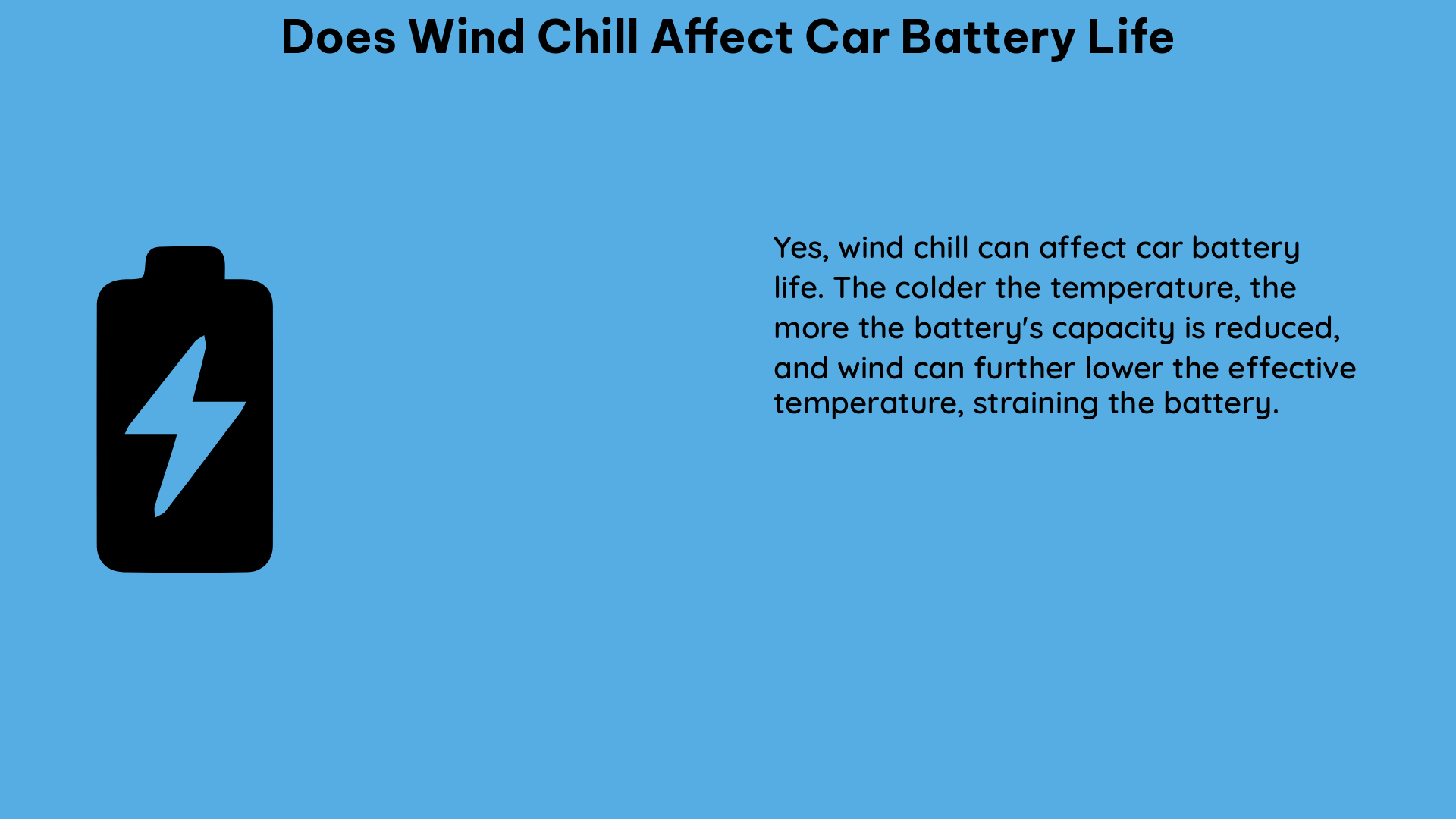Wind chill is a measure of the rate of heat loss from exposed skin caused by wind and low temperatures. While wind chill primarily affects living beings with an internal heat source, it does not have a significant impact on the temperature of inanimate objects like cars. However, extremely cold temperatures can still negatively impact various vehicle components, including the car battery.
Understanding the Impact of Cold Temperatures on Car Batteries
Car batteries are designed to operate within a specific temperature range, and their performance can be significantly affected by extreme cold conditions. The key factors to consider are:
Cold Cranking Amps (CCA) Rating
The CCA rating of a car battery indicates its ability to start an engine in cold temperatures. This rating represents the number of amps a fully charged battery can deliver for 30 seconds at 0°F (-18°C) while maintaining a minimum voltage of 7.2 volts.
- A higher CCA rating means the battery can deliver more power in cold conditions, making it easier to start the engine.
- For example, a battery with a 500 CCA rating can deliver 500 amps for 30 seconds at 0°F (-18°C).
Cranking Power Reduction
As the temperature drops, a car battery’s cranking power is reduced, requiring more effort to start the engine.
- At -20°F (-29°C), a battery’s cranking power can be reduced by up to 50% compared to its performance at 80°F (27°C).
- This means the battery must work harder to overcome the increased resistance and viscosity of the engine oil, which can also thicken in cold weather.
Reserve Capacity Minutes (RCM)
The RCM of a car battery represents the number of minutes a fully charged battery at 80°F (27°C) can deliver 25 amps and maintain a minimum voltage of 10.5 volts.
- A higher RCM indicates a longer runtime for the battery, which is crucial for powering accessories and maintaining the vehicle’s electrical system during cold weather.
- RCM is an important factor in determining a battery’s overall lifespan and performance.
Factors Affecting Car Battery Lifespan

In addition to the impact of cold temperatures, several other factors can influence a car battery’s lifespan:
Temperature
- Extreme temperatures, both hot and cold, can accelerate the degradation of a car battery’s internal components, leading to a shorter lifespan.
- In general, a car battery can last up to six years in moderate climates, but its lifespan may be shorter in regions with extreme weather conditions.
Vibration
- Constant vibration from the vehicle’s engine and driving conditions can cause the battery’s internal components to wear down more quickly.
- This can lead to a decrease in the battery’s capacity and overall lifespan.
Maintenance
- Proper maintenance, such as regular cleaning, tightening of connections, and monitoring of the battery’s charge level, can help extend its lifespan.
- Neglecting battery maintenance can result in premature failure, especially in cold weather conditions.
Strategies to Maintain Car Battery Performance in Cold Weather
To ensure optimal car battery performance and longevity during cold weather, consider the following strategies:
-
Regularly Check Battery Condition: Inspect the battery terminals for corrosion and ensure the connections are tight. Replace the battery if it shows signs of significant wear or damage.
-
Use a Battery Maintainer or Charger: Connecting a battery maintainer or charger during extended periods of non-use can help keep the battery fully charged and prevent premature discharge.
-
Park in a Garage or Covered Area: Shielding the car from direct exposure to wind and cold temperatures can help reduce the strain on the battery.
-
Consider a Battery Blanket: Investing in a battery blanket or heated pad can help maintain the battery’s temperature and improve its ability to start the engine in cold weather.
-
Avoid Excessive Electrical Loads: Minimize the use of power-hungry accessories, such as the heater, defroster, and lights, when starting the engine in cold conditions to reduce the strain on the battery.
-
Replace the Battery Proactively: If the car’s battery is several years old, consider replacing it before the onset of winter to ensure reliable performance in cold weather.
By understanding the impact of cold temperatures on car batteries and implementing these strategies, you can help extend the lifespan of your vehicle’s battery and ensure reliable performance, even in the harshest winter conditions.
References:
- Battery University. “How Cold Affects Car Batteries.” Battery University, accessed May 27, 2024, https://batteryuniversity.com/learn/article/how_cold_affects_batteries.
- Automotive Maintenance and Repair Association. “Cold Weather Battery Tips.” Automotive Maintenance and Repair Association, accessed May 27, 2024, https://www.amra.org/cold-weather-battery-tips/.
- Car Talk. “How Cold Weather Affects Your Car Battery.” Car Talk, accessed May 27, 2024, https://www.cartalk.com/content/how-cold-weather-affects-your-car-battery.

The lambdageeks.com Core SME Team is a group of experienced subject matter experts from diverse scientific and technical fields including Physics, Chemistry, Technology,Electronics & Electrical Engineering, Automotive, Mechanical Engineering. Our team collaborates to create high-quality, well-researched articles on a wide range of science and technology topics for the lambdageeks.com website.
All Our Senior SME are having more than 7 Years of experience in the respective fields . They are either Working Industry Professionals or assocaited With different Universities. Refer Our Authors Page to get to know About our Core SMEs.